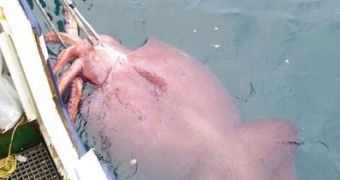Squid pen, remaining of the once well developed shell like the one of a snail, is usually a waste product of the squids, which most food processors discard. But a wound-healing gel based on squid pen and developed by a team at the Otago University was brought into the attention of international pharmaceutical companies. The new gel, called Chitodex, employs a polymer derived from squid, and has been already patented.
"These pens are usually thrown away during seafood processing. Australian medical trials had shown the gel possessed both anti-bleeding and anti-scarring properties. This is a very exciting discovery for us. This combination makes it the 'holy grail' of medical gels. It could potentially help a lot of people around the world by reducing complications in sinus surgery and other surgical procedures," said lead researcher Professor Brian Robinson.
About 500,000 endoscopic sinus surgeries against severe sinusitis cases are made annually only in the US, and in one out of three procedures, scarring can obstruct sinus passages, requiring subsequent corrective operation.
"The team's collaborators at Adelaide University Medical School are undertaking patient trials, following the gel's impressive performance in preventing adhesions when tested on sheep. Sheep were used because they have a very similar sinus set-up to humans." said Robinson.
"The gel also has an innate anti-bleeding action - a bonus for surgeons," said polymer expert Dr. Stephen Moratti.
Similarly to the available glue Araldite, the non-toxic hydro gel is made by mixing two tubes of ingredients together just before it is sprayed up in the subject's nose.
"Within a minute, it forms into a thick and sticky layer, which slowly leaves the nose over a couple of days," said Moratti.
The active chemical of the gel is a modified chitosan molecule, obtained from the squid pen, but also encountered in the crabs' exoskeleton.

 14 DAY TRIAL //
14 DAY TRIAL //